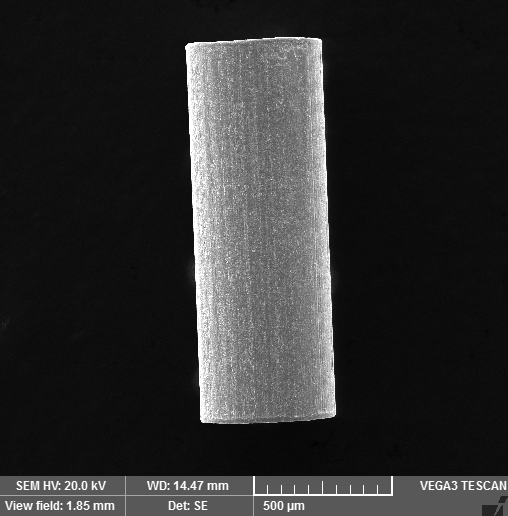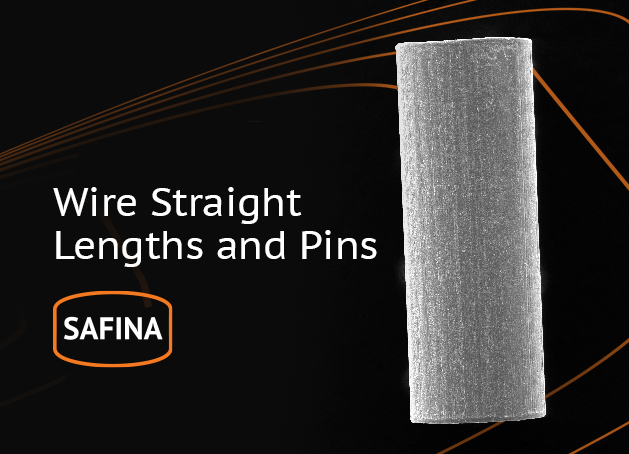Safina is an established manufacturer of precious metal products for various industries and following development in the industry and due to the advance of processes of alloys and straight wires production, Safina is capable to offer or develop a suitable product
Safina has a number of unique technologies and experts in R&D that can assure finding modern and innovative product based on experience or traditional methods and alloys. Therefore, the developing production of wire straight lengths or pins can be a solution for demanding industry fields.
In general:
Wire straight length and pins are manufactured in Safina precisely as per strict requirements for alloy composition and dimension with tolerances. Our precision wire straight length manufacturing provides high-quality, cost-effective solutions for customers. Not only straight wire to be cut, we are able to machine the pins.
Wire straight lengths and pins are the only solution for some applications and an obvious trend towards automation in part assembling.
Straight wires, their length or cuts and pins are mostly used as connectors and thus enable the reliable and essential transfer of power from the feedthrough assembly to the electrodes. Since they are critical components for energy transfer and mostly required to be resistant and durable in specific environment, it is necessary to maintain chemical composition, cleanliness, surface quality, mechanical properties and dimensions.
Basic overview:
Standard pins are manufactured in diameters of 0.5-3.0 mm and in lengths of 3-60 mm. Such pins can be cut by precise cutting, cutting (chopping) or pressing.
We are capable to manufacture much more options of wire straight lengths. We are currently able to offer diameters from 0.08 mm to 6.35 mm and lengths from 1 mm to 500 mm. Such straight wires are precisely cut into required length.
The pins can be also machined or adjusted to perfect fit. Our processing offers many options what can be performed – beveling, chamfering, grooves, recesses, holes, shapes, screws.
Straightening is an important part of production. Mastering the procedure is essential to the end result. The straightening procedure depends on the alloy and required mechanical properties. Subsequently, either a system of annealing and straightening on a wire straightener – with rotary wire straightener or hyperbolic roller straightener – or a system of continuous annealing followed by straightening is applied.
What is our specialty?
We are experts in precious metals processing and thus alloy development.

Au-Ag-Cu based alloys
e.g.: Au70Ag20Cu10; Au62.5Ag30Cu7.5; Au70Ag25Cu5
Need to comprise good electrical conductivity, high corrosion resistance, sufficient mechanical properties and durability (long life time)? Related high electrical load-carrying capacity and low electrical noise. These alloys are the solution.
Applications are based on slip rings which transfer power, signal and data from stationary parts to rotating parts.
So, we mostly include brushes, especially monofilament brushes for slip rings
Au-Ag based alloys
e.g.: AuAg23,5Ni1,5; Au71Ag26Ni3; Au69Ag25Pt6
and more … AuAg8; AuAg20, AuNi5…
These alloys are mechanically similar to the Au-Ag-Cu alloys but have significantly higher oxidation resistance at elevated temperatures.
If there is need of the highest chemical corrosion resistance in switching contacts in relays and pushbuttons, these materials should be picked. These gold alloys are also applied in the design of connectors as well as sliding contacts for potentiometers, sensors, slip rings and brushes in miniature DC motors.
Ag-Cu based alloys
e.g.: Ag80Cu20; Ag83.5Cu16.5
and more … Ag90Cu10; Ag72Cu28; Ag98CuNi
Using Copper in alloy with Silver increases mechanical strength as well as higher arc erosion resistance and mechanical wear resistance. AgCuNi alloy is characterized by high resistance to oxidation and low tendency to re-crystallization during exposure to high temperatures.
Typical applications of these Ag alloys are in micro switches, auxiliary current switches, control circuit devices, main switches.
Pd- based alloys
e.g.: Pd72Ag26Ni2; Pd35Au10Pt10Ag30Cu14Zn1; Pd44Ag38Cu16Pt1Ni1; Pd44Ag38Cu15
These alloys are ideally suited for demanding low current sliding electrical contact applications requiring high-wear resistance. They combine the mechanical features of Beryllium Copper and the stable contact resistance of high noble metals. They also offer wear, tarnish resistance and stable contact resistance.
These alloys are used in a wide variety of applications, including such products as throttle position, pedal position, electronic engine control sensors, guidance systems, potentiometers, trimmers, communications and bar code reader. Other applications are for cantilevers, buckling beam and other semiconductor test probes.
Other examples for wire straight lengths:
We can talk about pure Silver (Ag) wire for sensors, especially chemical type of liquid. Moreover, pure Ag or Ag-Cu is very used as inert or shielding material in bearings, slip rings for toxic or nuclear environment.
Pt82Ir18 material can be used for pins in extreme temperature environment for sliding electrical components.
Pd70Ag30 or Pd60Ag40 specific applications because of their resistance to sulfide are these alloys applied in specific relay designs.
Pt or Pt based alloy pins are used in medical application for probes or as detection parts
There are various materials we are able to develop or adjust from the already established alloys. The main industries for final use are Semiconductors, Microprecision components, Electronics, Automotive, Aerospace, Communication, Medical, Petroleum/Nuclear, Military, Laboratory and Testing.
Such wire straight cuts and pins are applied directly in connectors, brushes for slip rings, probes, sensors, signal and power transmission, electrodes, reference or detection material.

